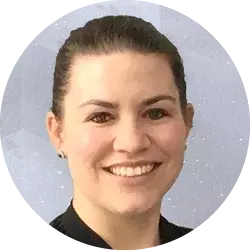The Oracle Forms Dilemma
by Günther Stürner 7-2024
#OracleForms – the holistic view of a technology that is still quite present despite its advanced age…
The history of Forms and its significance for Oracle
Oracle Forms, or simply Forms, has been Oracle’s workhorse for many years. Countless applications have been and continue to be developed and, above all, operated with this development platform. From very small to very large. From simple to highly complex. The history of this development platform goes back to 1979, when Oracle Database Version 2 was being created and Larry Ellison commissioned a young developer to develop a system that would allow data to be inserted into the database and searched for quickly and easily.

Bill Friend, who solved the task with a so-called “prompting” system, became the inventor of Oracle Forms. His system at the time asked questions and the developer’s answers were assembled into a ‘program’ and processed by a runtime system. The Interactive Application Generator (IAG) and the Interactive Application Processor (IAP), which were combined under the product name IAF (Interactive Application Facility), were born. With amazing capabilities for the time.
POPULAR POSTS
Modernization
Why and how to modernize legacy applications efficiently
Read more
Sponsorship project
PITSS is awarded a BMBF funding project for digital software documentation
Read more
Reference
Hrc is focusing on speed and security when maintaining its banking software with the PITSS Application Data Cube
Read more
Extremely widespread, but what does the future hold?
There are thousands and thousands of Forms applications around the world, which often represent the core systems, the backbone of companies and into which hundreds of person-years of development time have flowed. The data in the Oracle databases and the Forms applications (processes) are among the most valuable assets (apart from the employees) in a company.
And this is where the dilemma begins for many IT managers. Yes, Oracle Forms is a powerful development platform and powers countless systems. And yes, Forms is a stable and reliable software package that allows you to build and run great applications. And yet, Oracle Forms is no longer the fresh and cool product it once was.
Even though Oracle has announced a new Forms release (Release 14) after years of hesitation and only after much pressure from the user side (including the German Oracle User Group, DOAG), Oracle Forms seems to have fallen a little out of time.
The news of Oracle Forms 14 is spreading like wildfire – perhaps still available this year
This new, announced release is important and takes a little weight off the shoulders of many companies, as the previous release planning set an end date of December 2026 for official support. For many customers and their systems, it is a horror scenario that only rudimentary support will be offered for their Forms-based systems after December 2026.
With Oracle Forms14, there is more room for maneuver for some companies. However, this extension of the lifetime of Forms cannot alleviate one pain point. The availability of Forms experts has been declining for years and there is no sign of this trend reversing.
Forms developers are few and far between – who can keep track of old applications?
Young computer scientists neither learn Forms at university nor are they particularly interested in a technology that seems to have seen its best days. This is not exactly reassuring for those responsible, because without competent Forms developers, the applications can only be adapted with great difficulty to the constantly changing specifications in the operational process or to changed legal conditions. Irrespective of Oracle Forms, IT systems that are more than a dozen years old are automatically candidates for a critical review.
As the person responsible for digitalization at DEKRA (Global company specializing in safety, quality, and sustainability services) recently said in an interview: “All companies are faced with the task of examining and standardizing systems and processes that have grown over decades in order to become more flexible. To do this, you have to take many steps, constantly review them and realign them again and again.”
This requirement to examine the applications with their multifaceted processes, analyze the data structures and dependencies and interfaces is an absolute must in order to understand what is happening in these often widely ramified structures. An undertaking that is anything but trivial.
Analyzing old applications and regaining control – but how?
And yet this analysis, “this screening, the penetration of a Forms environment is the basic prerequisite for later conclusions and decisions on what to do in the future and what a possibly modernized or completely new system should look like,” says Andreas Gaede, CEO of PITSS GmbH from Stuttgart, which has been dedicated to the analysis of Forms applications and their refinement and modernization for many years.
To put it bluntly, a high-quality analysis without software support is not feasible for most systems. Even small and medium-sized Forms systems have countless SQL commands, PL/SQL packages, functions and consist of many tables, views and other data structures. Not to mention the large core systems of companies. Here, the sheer number of objects and dependencies is dizzying. Mostly created by different teams over the years and repeatedly expanded and changed.
Screening ‘by hand’ is not a good idea, and the use of ‘many hands’ does not make it any better. Even if it is anathema to many IT buyers to buy software in order to edit, assess and examine their own software or infrastructure – without innovative software-technical support, modernization measures will fail, regardless of the goals being pursued.
Analysis with software – intelligence meets ingenuity
The idea behind automated analysis support, such as that used by the PITSS.CON system, is as follows. A Forms application (.fmb file) is broken down into its components by an intelligent parser and stored in its own data structure within the Oracle database.
On this basis, a large number of evaluations can be carried out and correlations displayed. The result is a completely new view of the entire application, the processes, the interrelationships and the application data structures. It is always surprising to realize that a not inconsiderable part of the code is not (or no longer) used. To paraphrase the well-known saying about art, you could say: “is this code or can it go”.
Streamlining before migration is at least not a bad idea, because what is no longer there does not need to be migrated and what no longer needs to be migrated does not incur any costs. Mind you, while these analyses are being carried out, all systems continue to run. There is no interruption whatsoever during this phase.
Why the analysis leads to the success of your Forms application and perhaps also to APEX…
Once the Forms application has been decomposed, purged and optimized, various next steps can be taken. For example, this retreaded Forms application could be regenerated as a new production version from the analysis data structure as an .fmb file and executed and operated by the Forms runtime system.
The new, lean and optimized Forms app could also serve as the basis for an upgrade to a new Forms release. In this case, the decision would be to stick with our Oracle Forms environment, although some parts of it have been improved, stabilized and renovated. However, the most attractive option for many Forms customers at the moment is to migrate to Oracle APEX, one of the most powerful low-code development platforms on the market today.
APEX has many of the basic ideas of Forms, but also plays the new instruments of today with virtuosity. Thus, a straight path from Forms to APEX is virtually mapped out. APEX combines everything that the Oracle database masters perfectly: security, performance, SQL, PL/SQL etc. with technologies that are indispensable today: HTML, Javascript, CSS, JSON, plug-ins and, most recently, AI. Once developed, the application is available on all devices running a browser. The PWA technology (Progressive Web App) also makes APEX apps installable on smartphones, PADs or desktops and they then behave like apps that have been developed exclusively for these systems. All this without having to use an app store. Always on the move with the latest APEX app version.
What other advantages does APEX offer?
In addition to the advantages that speak in favor of APEX from a technological perspective, APEX also addresses two other important points. The first is the high level of acceptance among developers. The APEX developer community is huge and very active. APEX is not a niche product, it has arrived on the market and among developers and, also importantly, it is ideally suited for enterprise-grade applications.
The second interesting point relates to the cost of APEX. Every Forms customer is also an Oracle database customer and every database customer has already purchased APEX with their database license. No additional licenses are required. There is no limit to the number of developers who develop APEX applications and there is no limit to the number of users who use an APEX app. Everything is fully covered by the database license.
Are you still analyzing or are you already modernizing? Reach your goal faster with software!
If the analysis was carried out with the PITSS.CON system and the migration path to APEX is selected, a large number of APEX artifacts can be generated automatically from the existing data of the former Forms application. A Forms application can thus be automatically migrated to APEX between 60-75% at the touch of a button.
For the parts of the Forms application that require manual processing, the migration tool provides detailed specifications and documentation with all the necessary objects, dependencies and processes. A treasure trove of information – determined in the analysis phase – of enormous value, which additionally accelerates the development work to be carried out and raises the quality of the result to a new level.
How to gain confidence in new paths and eliminate risks
Migration projects are no easy task and the decision to replace an existing, functioning system must always be weighed up carefully. After all, a lot depends on this step. However, in today’s highly dynamic world, sticking with the status quo is often not a viable option.
The good news is that even large and large Forms applications can be migrated to APEX quickly and on time if a stringent process model is followed, state-of-the-art software tools are available for analysis and generation and the projects are supported by first-class APEX developers.
Tips for APEX migration
Oracle Forms and the user’s dilemma
https://www.computerwoche.de/a/oracle-forms-und-das-dilemma-der-anwender,3699045
 | Your contactUta Daniels |

